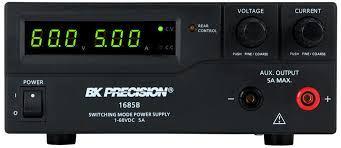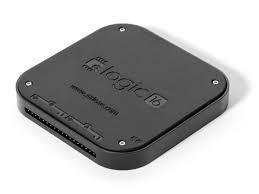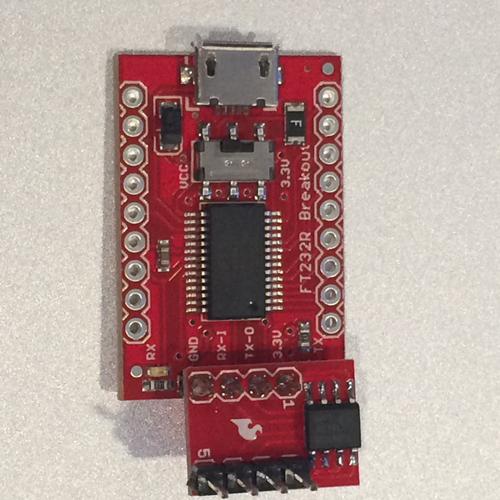There are a number of big-ticket items that every developer should have on his or her bench. Let’s examine the core tools that every developer needs to build an embedded workbench on a budget of $1,000.
September 7, 2015
An embedded systems developer looking to build a workbench could spend tens of thousands of dollars on test equipment, development boards, and miscellaneous tools. Unfortunately, most equipment just sits on the bench collecting dust and is rarely, if ever, used. Let’s examine the core tools that every developer needs to build an embedded workbench on a budget of $1,000.
There are a number of big-ticket items that every developer should have on his or her bench. The first is a high-quality and capable power supply. The first power supply I ever purchased was a Mastech HY5005 dual-output power supply. It cost only $250, and it seemed like a great deal at the time.
I quickly discovered that trying to save a few dollars would only cost me more. The power supply lasted about a year and a half before I was out looking for a new one. I settled on a BK Precision 1687B single-rail power supply (similar to the one shown below) that could provide 1 to 36 V at up to 10 A. For a cost of $300 and so far -- more than 5 years of service -- I’ve learned you pay for what you get.

The second large-ticket item that every developer should have is a logic analyzer. When debugging a driver or when the need arises to snoop on a communications line, there are few tools that do a better job. My personal favorite is the Saleae Logic 8 channel analyzer that runs for $219. It can sample on all 8 channels at a rate of 100 MS/s. The software for the Saeleae is always improving, additional features are always being added, and the quality of this tool has always been great.

The last big-ticket items that every developer should have is a decent multi-meter. I find that I use my multi-meter less and less each year, but it is still important to have a good one available to check continuity and board voltages. I’ve been using a Fluke 115, which runs for about $140.
The three big-ticket items above bring the current workbench cost to about $660, which leaves $340 dollars for smaller bench items and tools. Notice that there has been no mention of signal generators, oscilloscopes, spectrum analyzers, or other expensive equipment. I’ve found that most of these just sit on the bench and collect dust and are better off being rented when needed. Developing an embedded system based on a microcontroller and living in a digital realm really doesn’t require much more than the three big items mentioned.
Now, for small things that should go on the workbench, I believe that the first item should be development kits for experimentation. Development kits have become extremely inexpensive and can be purchased in price ranges from $12 - $20 each. I would recommend buying a number of these inexpensive boards up to $100. I would at least include:
Freescale Kinetis-L Freedom boards
With $240 to spare for our workbench, it is important to purchase tools that will be used to interface with the development boards and used for prototyping. Purchasing or building an Isolated USB-to-UART converter is an important low-cost tool to protect PC equipment but also to allow communications between a development kit and a PC. An Isolated USB-to-UART converter can be built from Sparkfun parts for $20. To learn how, see my YouTube video below.

There are a number of tools that can and should be purchased for within $120 of the $220 remaining budget. These include:
• Real-time clock break-out board
These are examples of what could be purchased. Similar types of tools can be purchased from Digi-Key or any other parts supplier.
When building an embedded workbench, a large number of the big-ticket items can be foregone and instead smaller and more useful tools and equipment purchased. For less than $1,000 a developer can get everything needed to experiment, build, and design, which, in turn, will give the skills and experience to get the job done faster.
What tools and equipment have you found yourself always reaching for that should be included in the last $100 of the budget? Chime in below in the comments section!

We’re heading to Philly and Houston! Design & Manufacturing Philadelphia will take place Oct. 7-8, while Design & Manufacturing Texas will be in Houston Oct. 13-14. Get up close with the latest design and manufacturing technologies, meet qualified suppliers for your applications, and expand your network. Learn from experts at educational conferences and specialty events. Register today for our premier industry showcases in Philadelphia and Texas!
Jacob Beningo is a Certified Software Development Professional (CSDP) whose expertise is in embedded software. He works with companies to decrease costs and time to market while maintaining a quality and robust product. Feel free to contact him at [email protected], at his website www.beningo.com, and sign-up for his monthly Embedded Bytes Newsletter here.
You May Also Like



